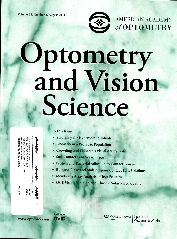摘要
Purpose. To assess the repeatability and reproducibility of central corneal thickness (CCT) measurements by high-resolution rotating Scheimpflug imaging (Pentacam, Oculus) and Fourier-domain optical coherence tomography (RTvue-100, Optovue) after laser in situ keratomileusis (LASIK) and to compare the agreement with ultrasound pachymetry (USP).
Methods. Forty-seven eyes of 47 patients after LASIK were included in the study. The first examiner took two successive Pentacam and RTvue CCT measurements, and this was repeated once again by the second examiner to assess intraobserver and interobserver repeatability and reproducibility. After performing non-contact examinations, the corneas were measured by USP to compare the level of agreement among the three devices.
Results. All Pentacam(center), Pentacam(apex), Pentacam(thinnest), and RTvue CCT measurements demonstrated high intraobserver repeatability, with respective precision (1.96 within-subject standard deviation) and intraclass correlation coefficients of 7.52, 7.43, 7.55, and 3.81 mu m and 0.985, 0.986, 0.986, and 0.997; interobserver repeatability results were similar. All coefficients of variation were low: <1% for all measures. Compared with Pentacam and USP measurements, the RTvue measurement significantly underestimated CCT by a mean of 10.52 to 15.28 mu m (p < 0.001) and 9.17 mu m (p < 0.001), respectively. The agreement of USP with Pentacam and RTvue by Bland-Altman analysis spanned over 30 mu m. The agreement of Pentacam with RTvue spanned approximate 20 mu m.
Conclusions. Both Pentacam imaging and RTvue Fourier-domain optical coherence tomography provide reliable and interchangeable measurement of CCT in post-LASIK corneas. However, they cannot be considered to be clinically interchangeable with USP. (Optom Vis Sci 2011;88:940-949)
- 出版日期2011-8
- 单位温州医科大学
